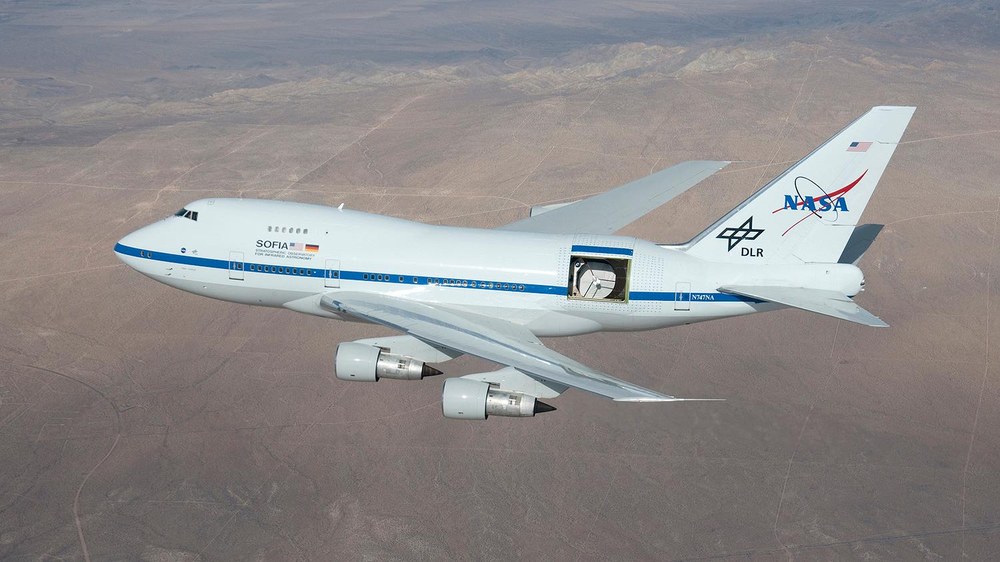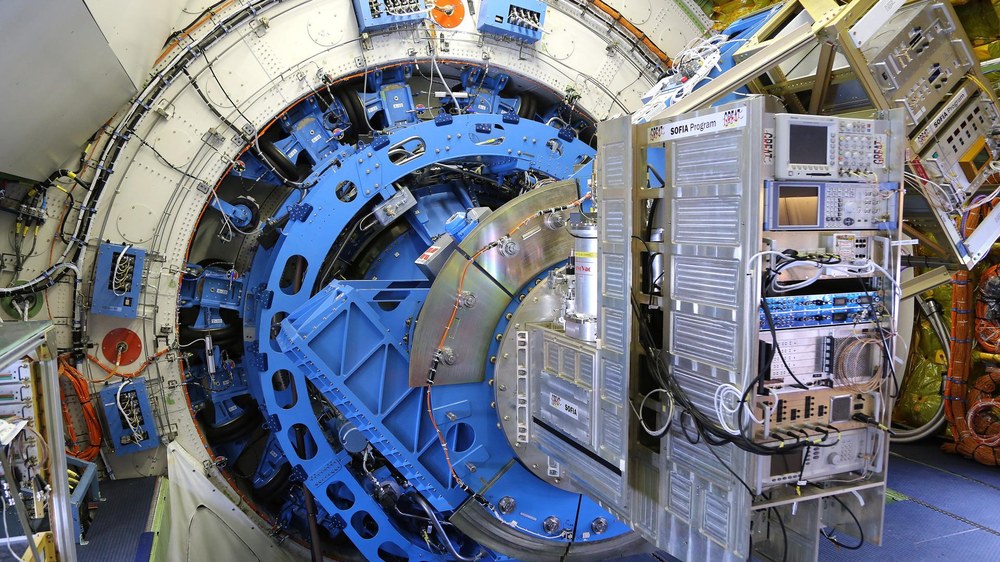The airborne observatory SOFIA to end its mission after eight years of operations



- NASA and the German Space Agency at DLR have decided to discontinue flight operations by the SOFIA airborne infrared observatory.
- The basis for this decision was the assessment of the National Academies in the USA that the scientific output of SOFIA no longer justified its operating costs.
- Germany contributed 20 percent of the airborne observatory’s operating costs and developed and built its globally unique telescope, which have enabled observations of the night sky from the fuselage of SOFIA for eight years.
- Focus: Space
In a joint statement, the US National Aeronautics and Space Administration (NASA) and the German Space Agency at the German Aerospace Center (Deutsches Zentrum für Luft- und Raumfahrt; DLR) announced that they have decided to discontinue flight operations by the Stratospheric Observatory for Infrared Astronomy (SOFIA) in September 2022. "This decision is based on a recommendation contained in the National Academy of Sciences, Engineering and Medicine's 'Decadal Survey', which develops priorities for the long-term direction of astronomical research in the US. Acting on these recommendations is obligatory for NASA," explained Walther Pelzer, DLR Executive Board Member and Head of the German Space Agency at DLR. "SOFIA is globally unique and, with the start of regular operations in 2014, has been successfully used for scientific research during a total of approximately 800 flights. The teams on both sides of the Atlantic have done an outstanding job. Our thanks go to them!"
"The cessation of SOFIA's flight operations is by no means the end of German-American cooperation," emphasised Thomas Zurbuchen, NASA's Associate Administrator for the Science Mission Directorate. "In a joint workshop to be held this summer, we want to work with DLR on new projects in future scientific fields."
The scientific data acquired by SOFIA are available in NASA's archives to astronomers worldwide. The Boeing 747 SP, which was converted into an observatory for infrared astronomy, completed its five-year prime mission in 2019 and this was extended for another three years until 2022. The SOFIA cooperation between NASA and the German Space Agency at DLR was set out in a mutual agreement. This specifies the distribution of the work packages. Germany supplied the world's only 2.7-metre airborne telescope, which was built into the fuselage of SOFIA, and has contributed 20 percent of the operating costs. In return, groups of scientists from Germany were allocated about 30 science flights per year. NASA purchased the second-hand Boeing 747 and converted it for the installation of the telescope. NASA also operates the observatory from Palmdale in California, SOFIA's home base.
SOFIA has completed approximately 100 scientific flights a year since 2014. During these flights, astronomical objects were observed, primarily in the Milky Way. The infrared observatory specialises in observations in the far infrared. It makes contributions to addressing questions in astrochemistry and astrophysics in particular. The first molecule that was formed in the Universe almost 14 billion years ago – helium hydride – was detected for the first time ever using SOFIA in 2019. This detection was achieved using the German Receiver for Astronomy at Terahertz Frequencies (GREAT) instrument, which was developed by the Max Planck Institute for Radio Astronomy in Bonn, the University of Cologne and the DLR Institute of Optical Sensor Systems in Berlin.
SOFIA has also explored how galaxies evolve and how stars and planetary systems form from interstellar molecular and dust clouds. This was made possible by the special telescope developed and manufactured in Germany, which has a diameter of 2.7 metres and weighs 17 tonnes. SOFIA can use six different scientific instruments, three of which were developed in Germany – two far-infrared instruments and one optical instrument.
The airborne observatory is stationed in Palmdale, California, from where it conducts most of its observation flights. However, it has also been used for astronomical observations around the world, most recently from Chile in March 2022 and from Cologne in March 2021. For observations of astronomical objects in the southern sky, SOFIA has also been operated from Christchurch in New Zealand.
The SOFIA project has been conducted by the German Space Agency at DLR with funding from the Federal Ministry for Economic Affairs and Climate Action (Bundesministerium für Wirtschaft und Klimaschutz; BMWK), the state of Baden-Württemberg and the University of Stuttgart. The development of the German instruments was funded by the Max Planck Society (Max-Planck-Gesellschaft; MPG), the German Research Foundation (Deutsche Forschungsgemeinschaft; DFG) and DLR. Scientific operations were coordinated on the German side by the German SOFIA Institute (Deutsches SOFIA Institut; DSI) at the University of Stuttgart, and on the American side by the Universities Space Research Association (USRA).
